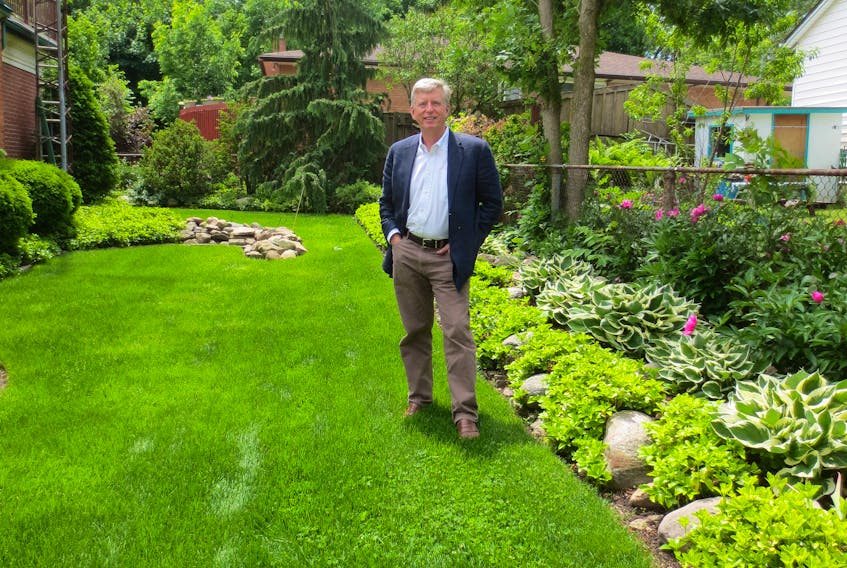Growing a great lawn should be like rolling down a hill. A deep green, grassy hill.
Easy.
Many readers will want to turn their attention to the grass growing under their feet, as chances are, it has not been growing much until recently. Our long, hot and dry summer was not exactly grass-growing friendly.

Once again, we come to the rescue.
The best lawn-growing weather of the season is now.
Even if it is dry where you live, there are some things that are consistent every September. Days get shorter, nighttime dew is heavy and generally, our evenings are cooler than they were just a month ago.
We grow great grass in many parts of Canada because we can. Which is why sod growing is a massive business.
Thickening an established lawn or starting a new one is much easier now than in spring.
Let us help you get started:
Thickening an established lawn
If weeds predominate, brown areas have occurred during the drought or bare patches appear for whatever reason (dog urine?) start by spreading a 6 to 8 cm layer of lawn soil or triple mix over the area. Rake smooth. Spread quality lawn seed at the rate of 1 kg over 100 m2 (2lb/1,000 ft2). Rake smooth again. Step on it or use a lawn roller, 1/3 full of water, to firm the seed and soil together. Water thoroughly.
Starting a new lawn
Follow the same advice, above, but be sure the area is weed free before you sow the new seed. Double the seed rate.
Sodding
Len Cullen, Mark’s dad and Ben’s grandpa, used to say that you could lay sod upside down in September and it would still grow. Mark knows this is true. Neither one of us recommend that you try it. Sod costs much more per sq. metre than seed but it is instant and this time of year it puts down roots in a hurry. Lay sod on a bed of quality triple mix or lawn soil that is at least 8 to 10 cm thick. The thicker the good soil, the better-quality grass you will grow over the long haul.
Fertilizing
It drives us crazy to see fall lawn food featured for sale this time of year. Retailers are responding to consumer demand for the product in September. We are all for “The customer is always right” mantra. But this time, they are wrong. The best time of the year to fertilize your lawn is in late autumn, like October or early November. A couple of weeks before the snow flies. The reason for this late application of lawn food is to build up the natural sugars in the roots of the grass plants, boosting grass plant nutrients in preparation for the long winter ahead. Yes, winter is coming. But not for three or four months, so do not get your woolly socks out just yet.
Cutting
Your lawn responds best to being cut at 7 to 9 cm high (two-and-a-half to three inches). The higher the better, as the longer the grass blades, the deeper the roots. And the deeper the roots, the more tolerant your lawn is of drought, overwatering, snow mold and disease.
Mulch
Use a mulching mower if you possibly can. Returning the grass blades to the root zone of grass plants is what Mother Nature intended (yes, her again).
Speaking of Mother Nature therein is the point of the whole thing. We do not control the weather or the changing of the seasons. Nature provides all kinds of cues for us to do various jobs around the garden and right now, all the signs point to your lawn.
Someday, perhaps, humans will control the tilt of the Earth, day length and weather patterns. But until then the best advice we can give you is to follow nature’s lead.
Mark Cullen is an expert gardener, author, broadcaster, tree advocate and member of the Order of Canada. His son Ben is a fourth-generation urban gardener and graduate of University of Guelph and Dalhousie University in Halifax. Follow them at markcullen.com, @markcullengardening, and on Facebook.









